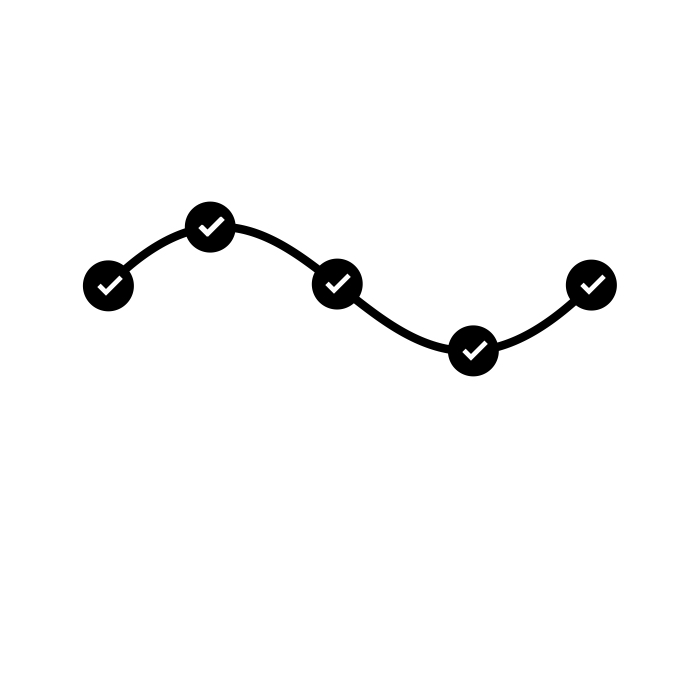Pursuit Of Goals Drive Buyer’s Journey
October 4, 2016

Customer Journey by Rafael Garcia Motta
One of my favorite apps is the Starbuck’s app. Being a coffee lover, the app is a major convenience for getting coffee at the nearest Starbuck’s location. Admittedly, the app serves very well as a motivator to stop at Starbuck’s versus elsewhere. So that I continue to reach the goal of enough stars to get the occasional free drink plus other offers.
It has long been established in the disciplines of the social sciences that individual and team motivation to achieve a goal or set of goals are powerful drivers influencing choices and decisions. For example, the Starbuck’s app definitely influences my choice, besides the great coffee, on where I go to get coffee. In business-to-business and consumer industries, the influence of goal-directed behaviors can be significant determinants of how choices and buying decisions are made.
Buyer’s Journey Is A Pursuit
The idea of understanding the process by which buyers make choices and decisions has been around for quite some time. In sales for the past few decades, it has been called understanding the buying process. When customer experience concepts burst on the scene 15-20 years ago, it was called customer journey mapping. As of late in the transforming world of marketing, the nomenclature of the buyer’s journey has come into vogue.
A common pitfall to all three over the years has been a focus on identifying the activities and tasks of customers and buyers. In essence, what buyers are doing, from an activity standpoint, when it comes to their process, or journey, towards a purchase decision. The insights gleaned from such mapping can contribute to improving processes and experiences for customers and buyers. For instance, it can reveal when organizations are putting unnecessary hurdles in front of customers, which makes for a miserable experience.
A drawback to an activity-based orientation is it does not reveal powerful motivators and goal-directed behaviors that are influencing how journeys are taken at any given time. Nor does it account for goals that are shaping choices and decisions when customers or buyers are in the midst of their journey. This provides a limited view of what customers are doing but does not provide insights into powerful goal-based motivators.
Goals Drive The Buyer’s Journey
The concept of understanding goals within the buyer’s journey is of paramount importance to today’s marketers. Without such understanding, marketers are lacking the insights needed to help customers and buyers make progress. And, progress is very key as to why understanding a goal-directed buyer’s journey viewpoint is vital to marketing.
Progress is often viewed from a one-sided perspective. Meaning marketing and sales views progress as in how they have moved a prospective buyer further down the process or journey. However, this is flawed. What matters most is how the prospective buyer perceives, reacts to, and responds to progress. The essential reasons why progress matters are as follows:
Numerous studies in the social sciences regarding behavior show that when people or teams of people believe, perceive, and feel that progress is being made towards a goal or set of goals, they are likely to move towards achieving that goal.
The implications to marketing and sales are profound. Unless you can help people and teams of people to believe, perceive, and feel like they are making progress towards achieving goals, then all the buyer journey mapping in the world will not help you.
Understanding The Difference Between Priorities And Goals
Marketers today are not getting the full benefit of the goal-directed understanding of the buyer’s journey due to confusing priorities and initiatives with goals. Oftentimes, marketers are given or creating buyer personas in which the emphasis is on factual data. Such as priorities and initiatives. Priorities and initiatives usually are the overt statements companies will make about what they hope to complete. Note the emphasis on complete. For instance, a B2B company statement or annual report may state that completing an ERP transformation from a home-grown application to a commercial application within an 18-month period is a priority.
Marketers, in this case, may create a buyer’s journey perspective that is geared towards getting company A to make the final choice of an ERP application theirs. The focus being on making the case that their application is the better choice over competitors to complete this priority or initiative. Their efforts will be replete with the factual focus on risk factors, buying criteria, and requirements. While these must be addressed, they will be what every other competitor is focused on as well.
What is missing is understanding the myriad of underlying goals that are related to what people and organizations are attempting to accomplish. More importantly, understanding why reaching certain goals are important will be missing. Just as well, understanding the goal “markers” that help people to believe, perceive, and feel progress is being made will be lacking. Along the path of a buyer’s journey, prospective buyers are perceiving and accomplishing a variety of goals along the way.
What this implies is that if marketers cannot help people to believe, perceive, and feel that they have accomplished certain goals marked along a journey towards greater overarching goals, then buyers will not move in that direction. In essence, take a different direction and journey towards somewhere else or another organization where they perceive and feel progress is being made.
It Is About Movement
For CMOs and their teams of marketers, the use of buyer journey mapping can be helpful. Providing the focus is on understanding which goals are important to buyers, how buyers pursue goals, and what makes buyers believe that progress is being made towards accomplishing goals.
The buyer’s journey is about understanding movement. Companies who have created buyer personas based on factual data and common industry priorities alone find extreme difficulty when it comes to understanding the buyer’s journey. Those who lack understanding of how to help guide and create a satisfactory movement towards progress on goals will find that buyers will remain far from the end of a journey meant to end with them.
What can CMOs and marketers do to maximize the benefits of understanding the buyer’s journey? Ensure that their buyer’s journey is a depiction of how buyers move and make progress towards the pursuit of goals within and at the end of their journey.
(In this video, Wharton’s Katherine Milkman discusses the value of making small steps towards achieving goals. Buyers today make attempts to achieve “small step goals” along their buyer’s journey. A reason why just understanding priorities and initiatives alone will limit understanding. Enjoy.)
Business & Finance Articles on Business 2 Community
(17)














